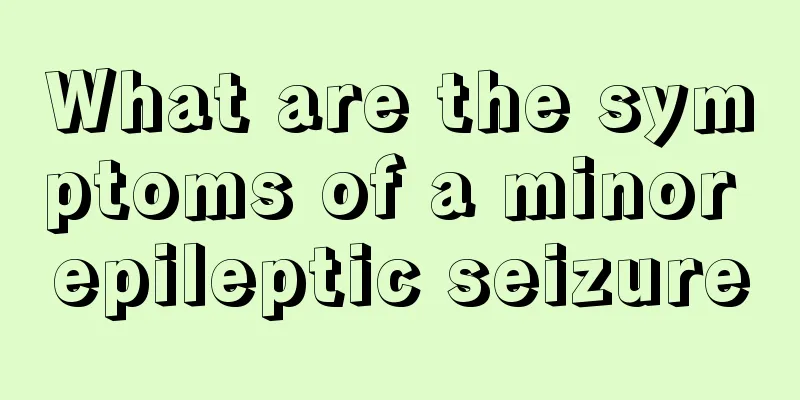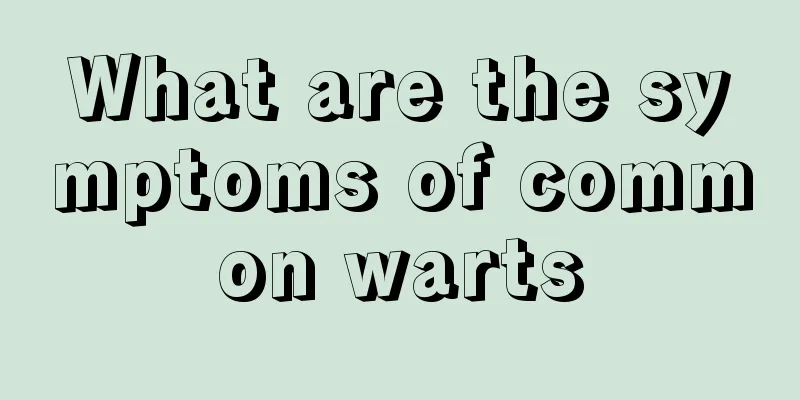What are the symptoms of a minor epileptic seizure

|
A minor epileptic seizure is milder than a major epileptic seizure and the duration of the illness will not exceed half a minute. The typical symptoms are loss of consciousness, loss of consciousness, no convulsions, and no falls. If the disease occurs in children, they may suddenly stop moving their hands. Overview Epilepsy is a disease caused by paroxysmal abnormal discharges of brain neurons due to various reasons, resulting in abnormal movements, sensations, consciousness, mental and autonomic nervous system functions. A minor epileptic seizure is also called a non-convulsive seizure with a non-localized onset, or a global non-convulsive seizure, and is called an absence seizure in the international classification. Absence seizures The child suddenly turns pale while studying or playing Sudden, brief loss of consciousness, lasting no more than 30 seconds, with spontaneous recovery. For example, when the child is studying or playing, his face suddenly turns pale, his eyes stare, he stops the original activities and conversation, something in his hands falls, his head tilts forward, the corners of his mouth and eyelids twitch, and his eyeballs tremble from time to time, but he neither falls nor has convulsions. The frequency ranges from low to high, even several times a day. Experts point out that general intelligence is not affected, but if the attacks occur frequently, it may affect learning. It often occurs between the ages of 5 and 10. Those that occur after the age of 15 are called absence seizures, which are more common in temporal lobe epilepsy. When a patient has a grand mal seizure and the severity of the seizure is alleviated after taking medication, although the patient is only briefly unconscious, it should still be considered a grand mal seizure rather than an absence seizure. Variant petit mal seizures 1. Myoclonic seizures Bilateral rhythmic myoclonic twitches mainly in the muscles of the head and upper limbs may occur singly or repeatedly; the attacks are not accompanied by impaired consciousness and may occur at any time. 2. Akinetic seizures Unable to maintain posture. Sudden bowing of head when standing A sudden, transient loss of muscle tone, resulting in an inability to maintain posture. When standing, the patient suddenly lowers his head, bends his knees, and falls. Sometimes it may occur several times in succession, with a brief loss of consciousness or disturbance of consciousness, followed by immediate awakening. 3. Tonic seizures It manifests as sudden rigid contraction of certain muscles, such as flexion of the trunk, tilting of the head forward, etc., fixed in one posture, which lasts for a period of time, generally not more than 1 minute, accompanied by brief loss of consciousness, and the patient wakes up immediately after the attack. |
<<: Small lumps of flesh grow on the body, the cause is terrible
>>: Know the early symptoms of hepatitis B in advance
Recommend
What is 300 degrees of myopia
Myopia has become an increasingly serious eye pro...
What are the diagnostic methods for ovarian tumors?
Ovarian tumors are common gynecological tumors, a...
Why does it bleed when you suck hard in your mouth?
When we brush our teeth, we may find that our mou...
What is D2 radical gastrectomy for gastric cancer
Radical gastrectomy for gastric cancer D2 is a ra...
The white strips inside the crab
Crabs are not only delicious but also nutritious,...
Feeling sleepy after drinking coffee
If you feel sleepy after drinking coffee, it is m...
There is a rotten taste in the mouth. What's going on?
There are many factors that cause the rotten tast...
What medicine should I take for smelly farts
Farting is a normal physiological phenomenon that...
Can people with polycystic kidney disease eat pineapples? What fruits can people with polycystic kidney disease eat?
Spring is the best season to eat pineapples, but ...
What is bone marrow inflammation
Inflammation of the bone marrow, also known as os...
Can thyroid cancer cause itchy throat and cough?
Yes, thyroid cancer may cause an itchy throat and...
What foods are good for hair
A head of black and shiny hair is the pursuit of ...
Can cinnabar be drunk
I believe that everyone has seen and used cinnaba...
What are the dangers of a high lymphocyte ratio?
If the lymphocyte ratio is too high, it may easil...
Is endometrial cancer contagious?
Endometrial cancer is one of the common gynecolog...









